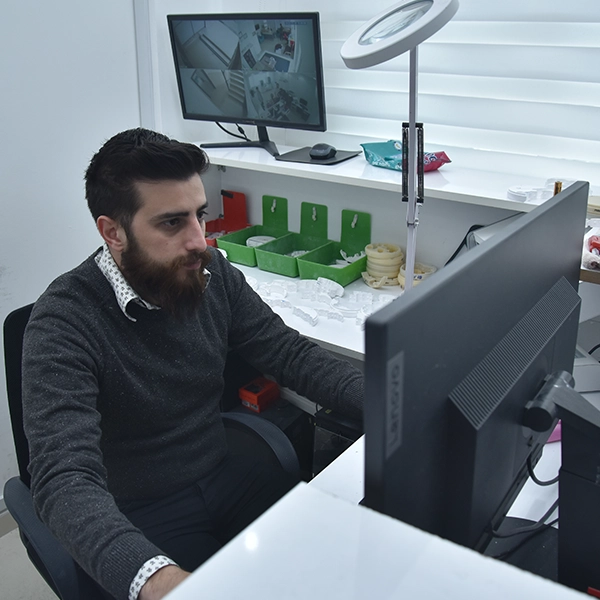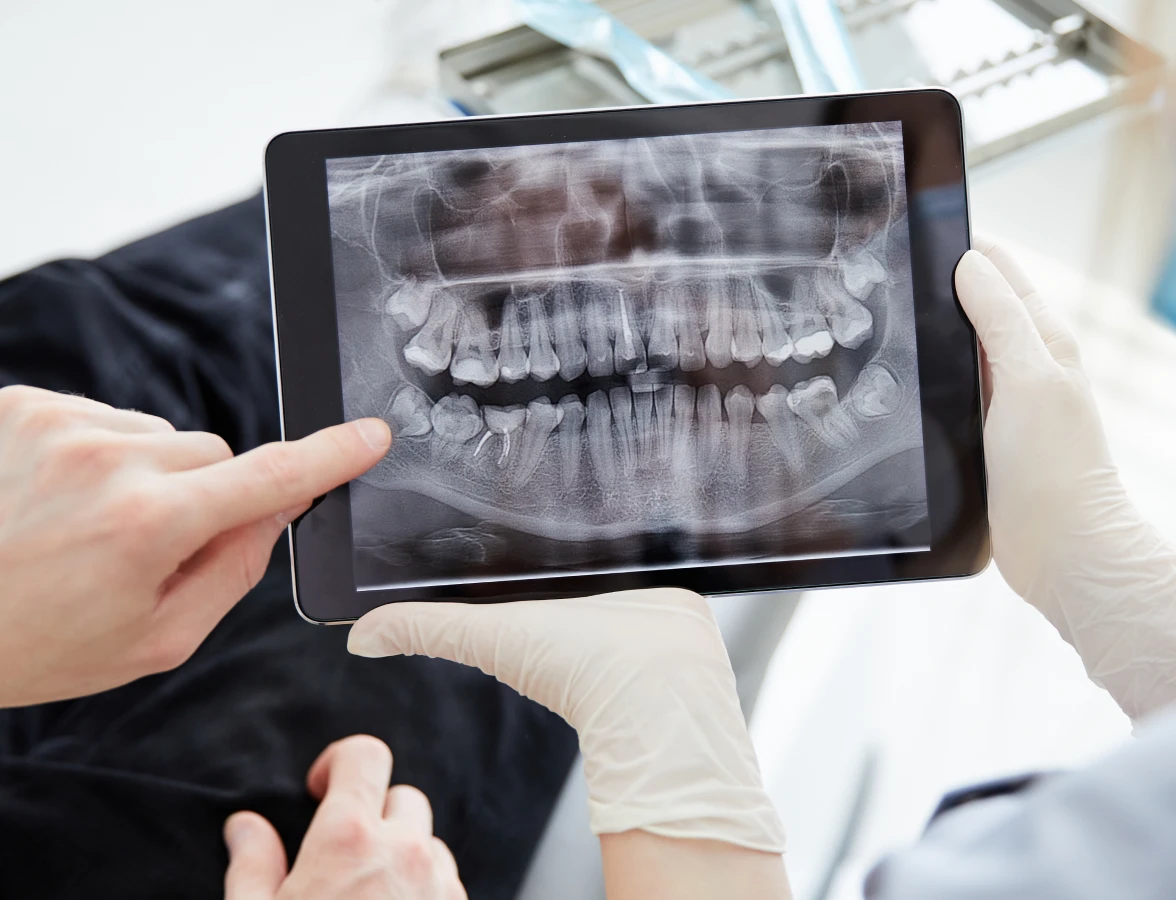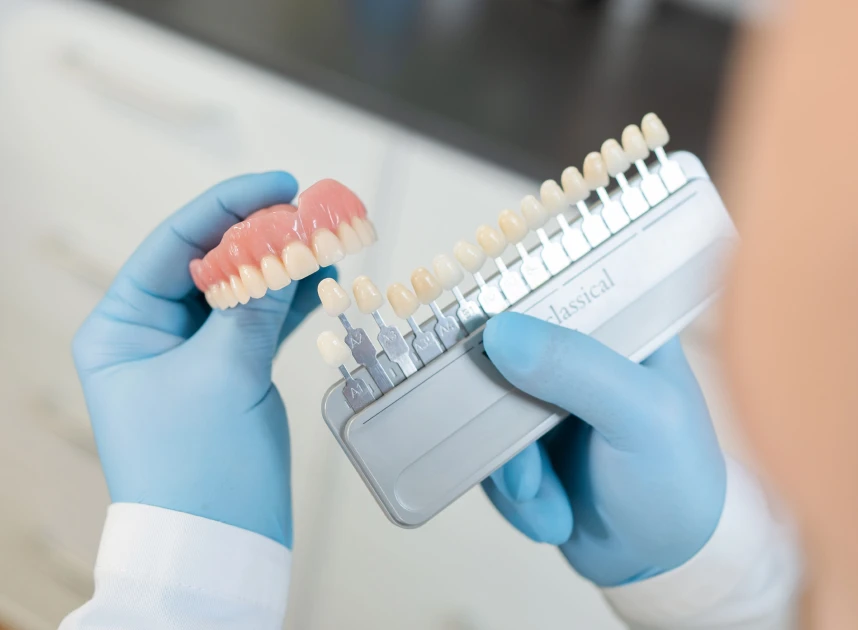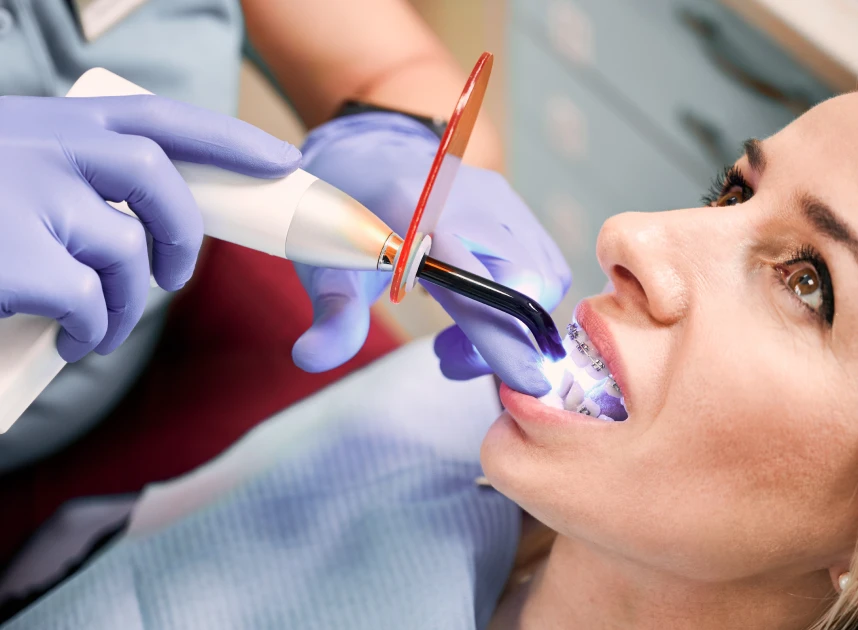100% Guaranteed Treatment
Tooth Extraction and Surgical Extraction
From €75
100% Guaranteed Treatment
Tooth Extraction and Surgical Extraction
Tooth extraction, the removal of a tooth from its socket, is a common dental procedure performed for various reasons. While dentists strive to preserve natural teeth whenever possible, extraction becomes necessary in certain situations. There are two main types of tooth extraction: simple and surgical. Understanding the differences between these procedures and their specific indications is crucial for both dental professionals and patients.



Tooth extraction, the removal of a tooth from its socket, is a common dental procedure performed for various reasons. While dentists strive to preserve natural teeth whenever possible, extraction becomes necessary in certain situations. There are two main types of tooth extraction: simple and surgical. Understanding the differences between these procedures and their specific indications is crucial for both dental professionals and patients.



Simple Tooth Extraction
Definition
A simple tooth extraction involves the removal of a visible and easily accessible tooth, typically using specialized instruments like elevators and forceps. This procedure is generally performed under local anesthesia, numbing the area around the tooth to minimize discomfort.
Indications
Simple extractions are suitable for:
- Loose or broken teeth: Teeth that are severely loose due to periodontal disease, trauma, or other factors can be easily removed with minimal intervention.
- Severely decayed teeth: When a tooth is extensively decayed beyond repair, extraction may be the only viable option.
- Impacted teeth: If a tooth is unable to erupt due to lack of space or improper positioning, simple extraction may be possible if the crown is partially exposed.
Surgical Tooth Extraction
Definition
A surgical tooth extraction is a more complex procedure required when a tooth is not readily accessible or presents additional challenges. This often involves making an incision in the gum tissue and potentially removing underlying bone to facilitate tooth removal. It is typically performed under local anesthesia with sedation or general anesthesia, depending on the complexity of the case and patient preferences.
Definition
A surgical tooth extraction is a more complex procedure required when a tooth is not readily accessible or presents additional challenges. This often involves making an incision in the gum tissue and potentially removing underlying bone to facilitate tooth removal. It is typically performed under local anesthesia with sedation or general anesthesia, depending on the complexity of the case and patient preferences.
Comparison of Simple and Surgical Extractions
| Feature | Simple Extraction | Surgical Extraction |
|---|---|---|
| Complexity | Less complex | More complex |
| Anesthesia | Typically local anesthesia | Local anesthesia with sedation or general anesthesia |
| Incision | No incision required | Incision in the gum tissue and potentially bone removal |
| Difficulty of removal | Relatively easy | More challenging |
| Recovery time | Generally faster | Longer and may involve more discomfort |
Complications
While tooth extraction is a generally safe procedure, some potential complications can occur, including:
- Bleeding: Prolonged or excessive bleeding from the extraction site.
- Infection: Signs of infection, such as redness, swelling, pain, fever, or pus at the extraction site.
- Dry socket: A painful condition that occurs when the blood clot at the extraction site dislodges, leaving the bone and nerve endings exposed.
- Alveolar osteitis: A rare but serious infection of the jawbone that can occur after a tooth extraction.
- Damage to adjacent teeth or nerves: Unintentional damage to neighboring teeth or nerves during the extraction procedure.
Procedure
- Local Anesthesia: The dentist administers local anesthesia to numb the area around the tooth and surrounding tissues.
- Tooth Loosening: Using specialized instruments, the dentist loosens the tooth by gently breaking down the periodontal ligament fibers that connect the tooth to the socket.
- Tooth Removal: Once sufficiently loosened, the dentist carefully removes the tooth with forceps.
- Socket Cleaning and Closure: The dentist cleans the socket to remove any debris and may place a suture (stitch) to close the gum tissue.
Indications
Surgical extractions are necessary for:
- Impacted wisdom teeth: Wisdom teeth that are completely or partially impacted within the jawbone require surgical extraction due to their complex positioning and potential for complications.
- Root fragments: Occasionally, during a simple extraction, the tooth root may break, leaving a fragment embedded in the jawbone. Surgical intervention is then necessary to remove the remaining fragment.
- Severely damaged or fractured teeth: Teeth with extensive damage or fractures that extend below the gum line may require surgical extraction due to the compromised structure and difficulty in grasping the tooth with standard instruments.
- Dental cysts or tumors: In some cases, tooth extraction may be part of a larger surgical procedure to remove cysts or tumors affecting the jawbone.
Procedure
- Anesthesia: Depending on the complexity of the case and patient preference, local anesthesia with sedation or general anesthesia is administered.
- Incision and Flap Formation: The dentist makes an incision in the gum tissue and carefully reflects the tissue to expose the underlying bone.
- Bone Removal (if necessary): If the tooth is deeply embedded in the bone, a small amount of bone may need to be removed using specialized instruments to facilitate access.
- Tooth Sectioning (if necessary): In some cases, the dentist may need to section the tooth into smaller pieces for easier removal.
- Tooth Removal: The tooth is carefully removed using forceps or other instruments.
- Socket Cleaning and Closure: The socket is thoroughly cleaned to remove debris and promote healing. The gum tissue is then repositioned and sutured closed.
Post-operative Care
Following a tooth extraction, it’s crucial to follow your dentist’s post-operative instructions carefully to promote healing and minimize complications. These typically include:
- Pain Management: Taking prescribed pain medication as directed.
- Bleeding Control: Applying gentle pressure with a gauze pad to the extraction site for 10-15 minutes after the procedure.
- Diet: Opting for soft, non-chewing foods on the side of the extraction for the first few days.
- Rinsing: Avoiding vigorous rinsing or spitting for 24 hours to prevent dislodging the blood clot that forms at the extraction site.
- Smoking: Avoiding smoking for at least 24 hours, as it can impede healing and increase the risk of complications.
- Sutures: If sutures were placed, keeping the area clean and avoiding pulling or dislodging them.
- Activity: Restricting strenuous activities and avoiding bending over or lifting heavy objects for the first 24 hours.
- Follow-up: Scheduling a follow-up appointment with your dentist to monitor healing and remove any sutures, as needed.
Conclusion
Tooth extraction, whether simple or surgical, is a common dental procedure with various indications. Understanding the different types of extractions, their procedures, and post-operative care is essential for both dental professionals and patients. By following proper guidelines and seeking prompt attention for any complications, patients can ensure a smooth and successful extraction experience.
Cleopatra Smile is a professional dental clinic located in Antalya, Turkey. We offer high-quality dental care at affordable prices. Our team of experienced dentists is dedicated to providing you with the best possible care. We offer a wide range of dental services, including tooth extraction, dental implants, root canals, and more.
Contact us today to schedule a consultation and learn more about our services.
We offer:
- Free airport transfer for patients coming from abroad
- 4-star hotel accommodation
- X-rays and online consultancy
- 50% cheaper treatment fees and treatment process compared to other countries
Our clinic is:
- Located in the heart of Antalya
- Easily accessible by public transportation
- Equipped with the latest dental technology
- Staffed by a team of experienced and friendly dentists
We are committed to providing you with the best possible dental care experience.
FAQ
Find the answer To your question
Our Dentists Team




our packages
Our Active Discounted Packages
-
All on 4 SWISS – Metal Porcelain € 3.900
(4 Implants & 12 Crowns) - Per Jaw
-
All on 4 SWISS – Metal Porcelain € 7.800
(8 Implants & 24 Crowns) - Full Mouth
-
All on 6 SWISS - Metal Porcelain € 4.800
(6 Implants & 14 Crowns) - Per Jaw
-
All on 6 SWISS - Metal Porcelain € 9.600
(12 Implants & 28 Crowns) - Full Mouth
-
All on 6 IMPLANCE - Metal Porcelain € 3.600
(6 Implants & 14 Crowns) - Per Jaw
-
All on 6 IMPLANCE - Metal Porcelain € 7.200
(12 Implants & 28 Crowns) - Full Mouth
-
All on 6 STRAUMANN - Metal Porcelain € 7.000
(6 Implants & 14 Crowns) - Per Jaw
-
All on 6 STRAUMANN - Metal Porcelain € 14.000
(12 Implants & 28 Crowns) - Full Mouth
our testimonials
Enhancing Your Smile & Your Confidence











our treatments









